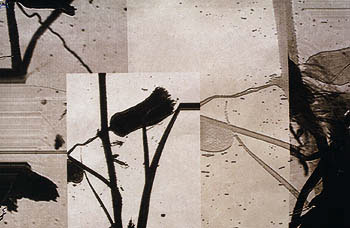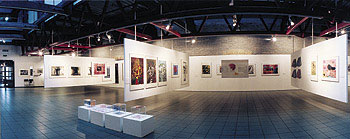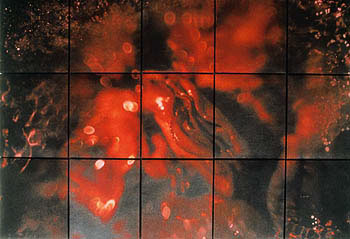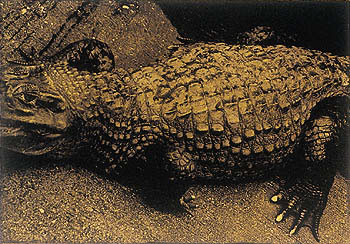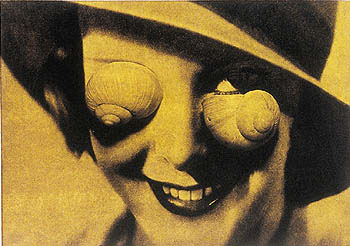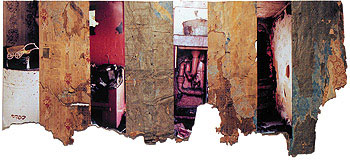(First published in Postimees, 2 October 1998)
Things do not look too good for the Tallinn 11th Graphic Art Triennial. Not a single decent review has appeared. Plenty of lightweight art policy twaddle goes round instead, on topics like ėdo we really need this triennial at all?‰. Taxpayers‰ money, after all, which might perhaps be put to better use on the new art museum.
A lot of money has been spent. People have worked for two years, without getting paid, so that there could be more left for the exhibition. And the result is here a proper international art exhibition, quite unique for Estonia in its geographical scope and the number of participants involved. And even more importantly, at least for me: everything displayed in our best exhibition halls, with excellent design and proper format. And then along comes my good friend and colleague Ants Juske who says that maybe it would be better to save the money for the art museum…
Maybe. But before making such hypothetical speculations, we should find out where people‰s interest in art ends and where their personal problems begin. For years, the critics‰ interest in art has ended where graphic art begins. At any rate, it has become diluted into mild condescension which in Soviet times found expression in a clear-cut hierarchy: first came the painting, then the sculpture and finally the graphic art.
During perestroika the supremacy of painting was overthrown in violent verbal conflict. Sculpture, being the most expensive genre, expired by itself because of the lack of funding. It seems that now it‰s the turn of graphic art. But those currently involved in the political trashing of the triennial are not aware of the fact that they are brandishing their stick at the graphic art that was fashionable 20 years ago. The present triennial is full of modern art. A kind of post-Soviet contempt for this genre does not allow ėcertain comrades‰ to admit that the 11th Triennial abounds, among other things, in installations, photographs, object art, kinetic art and space art. There are videos, interactivity, even computers. These magic words ought to make at least some of those who turn up their noses slaver like Pavlov dogs.
But that is not the point. I am merely surprised how quickly fresh political capital has managed to gather behind the back of the new tendencies in art. In the past, it was enough for a painting just to be a painting. That was a total guarantee. Now digital art finds itself in the same situation. If you fiddle around with bytes and download all sort of nonsense on the screen, you are in, you are trendy. Allowances will be made for you, just as they were made for painters all those years ago, because one is dealing with with the leading art genre. But try uttering the word graphics… quite another matter… The Pavlov dog will immediately start to growl, because even in Soviet times everyone knew that anything on paper and behind glass was, is and will remain third-rate art.
This ancient prejudice, which used to hide behind the name of ėart policy‰, now functions as a pair of blinkers on the head of the new art history. The blinkers conceal the fact that the 11th Triennial quite discreetly bridges the gap between the more conservative and encapsulated part of graphic art and the genres adjacent to it, and seeks compromise with the general picture, without the slightest wish to give anything an arrogant brush-off. The exhibition measures distances on the contemporary art landscape, and does so without any cheap fuss, but with scholarly restraint instead. This is a kind of encyclopaedic attitude, an effort to systematise the whole existing material of Eurasian graphic art.
The triennial is also able to trace certain lines of force between academic free graphics and graphic design, and this is something that should make the arrogant commercial artists ponder about the point of obtaining academic art education. Nevertheless, this particular feat that would help find cultural reconciliation between commercial art and academism, is not in the least appreciated. No, the general opinion is that the new art museum would be still better. It reminds me of the story about the old woman who with her ever greedier wishes finally enraged the goldfish, and was in the end left empty-handed.
It is remarkable that pluralism, the slogan of new thinking in art, ends where graphics begin. A fool will get beaten up even in church, but there‰s no need to play the wealthy vicar when the homework has not been done. The 11th Priennal triennial gives a chance of catching up namely to those who try to conceal their lack of general education with computers. And to those who think that every media bubble has to consist of soap.


